In the sales world, the ability to quickly harness and communicate critical information can be the difference between closing a deal and missing an opportunity.
This is where sales documentation can help.
According to a Forrester report, 97% of organizations had minimal digital document processes, leading to inconsistent messaging across sales teams and the loss of crucial deal-related information.
Sales documentation addresses this problem by centralizing data like product details, pricing strategies, customer testimonials, and competitive analyses.
In this blog, we will learn how to create sales documentation, discuss its types, and explore some real-life examples. We will also understand how sales documentation software can help create detailed sales documentation.
What Is Sales Documentation?
Sales documentation is the collection of documents that are used to support and streamline the sales process within an organization. These documents provide essential information that sales teams need to engage and convert prospects, manage customer relationships, and close deals effectively.
It provides them easy access to sales collateral, including case studies, product and service information, PPTs, and much more, so they can make the right pitches and close deals quickly.
With a structured sales process and other necessary resources at your sales team’s disposal, they are better positioned to answer prospects’ questions, upsell products, and build lasting customer relationships.
For example, a comprehensive sales playbook includes detailed profiles of ideal customers, scripts for sales calls, presentations, product pricing guides, frequently asked questions, and case studies or testimonials that illustrate the product’s benefits.
The playbook serves as a one-stop resource for sales representatives to understand best practices, key selling points, and strategies specific to their roles and targets.
What Are the Types of Sales Documentation?
In its different forms, sales documentation provides crucial resources that guide, inform, and empower sales representatives throughout the customer acquisition and retention processes. These are the types of sales documentation.
Sales Process Playbook
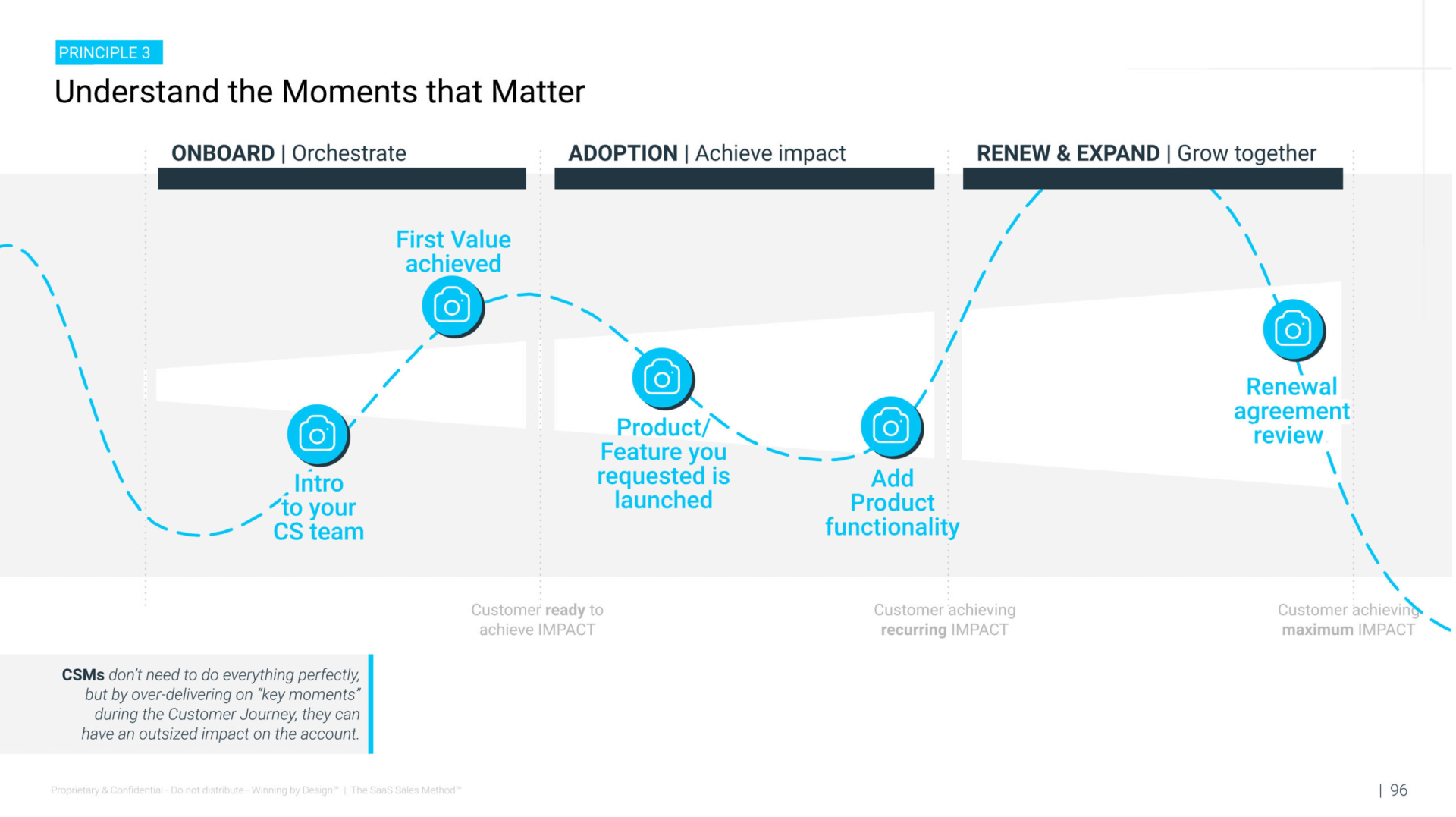
This foundational document outlines the company’s sales strategies and procedures. It provides a detailed roadmap for sales reps, like the stages of the sales cycle, critical activities at each stage, and best practices for engaging prospects.
The playbook ensures consistency and effectiveness across the sales team by standardizing approaches to common sales scenarios.
Sales Collaterals
These refer to the variety of materials used to support and enhance the sales process, including brochures, presentations, product datasheets, case studies, and white papers.
a. Pricing Documents: These include detailed pricing models, discount policies, and packages that help sales reps understand and articulate the value proposition effectively during negotiations.
b. Competitor Battlecards: These are crucial for preparing sales reps with information on how their products or services compare to those of competitors.
They usually include strengths and weaknesses, market positions, and tactics for handling objections related to competitors.
c. Case Studies: These are real-world examples of how the company’s products or services have successfully solved problems for other customers. These are valuable for demonstrating value and effectiveness to potential buyers.
d. Product Demos & Explainer Videos: These are visual and interactive tools that help illustrate a product’s features, benefits, and operation. They are particularly useful in engaging prospects and helping them visualize how the product can fit into their operations.
FAQs (Frequently Asked Questions)
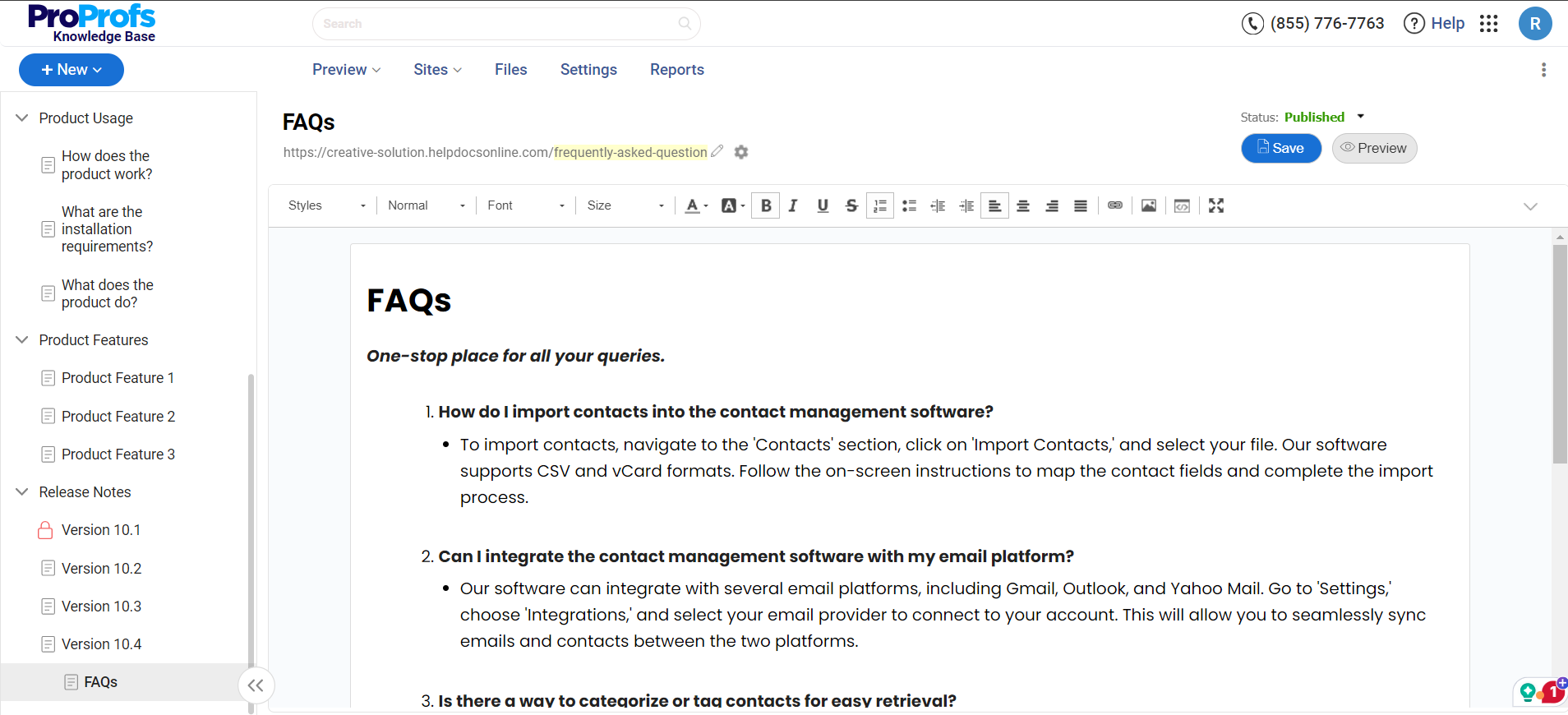
These are vital for sales teams to answer common inquiries from prospects quickly. These can be especially useful during initial interactions, ensuring sales representatives are well-prepared with accurate and consistent responses.
| Related blog: How to Create an FAQ Page: Steps & Examples |
Sales Training Documents
Training documentation designed to onboard and continuously educate sales staff on product updates, market trends, and new sales techniques.
They help maintain a knowledgeable and adaptive sales force that can respond to changing market conditions and customer needs.
Proposal Templates & Quote Forms
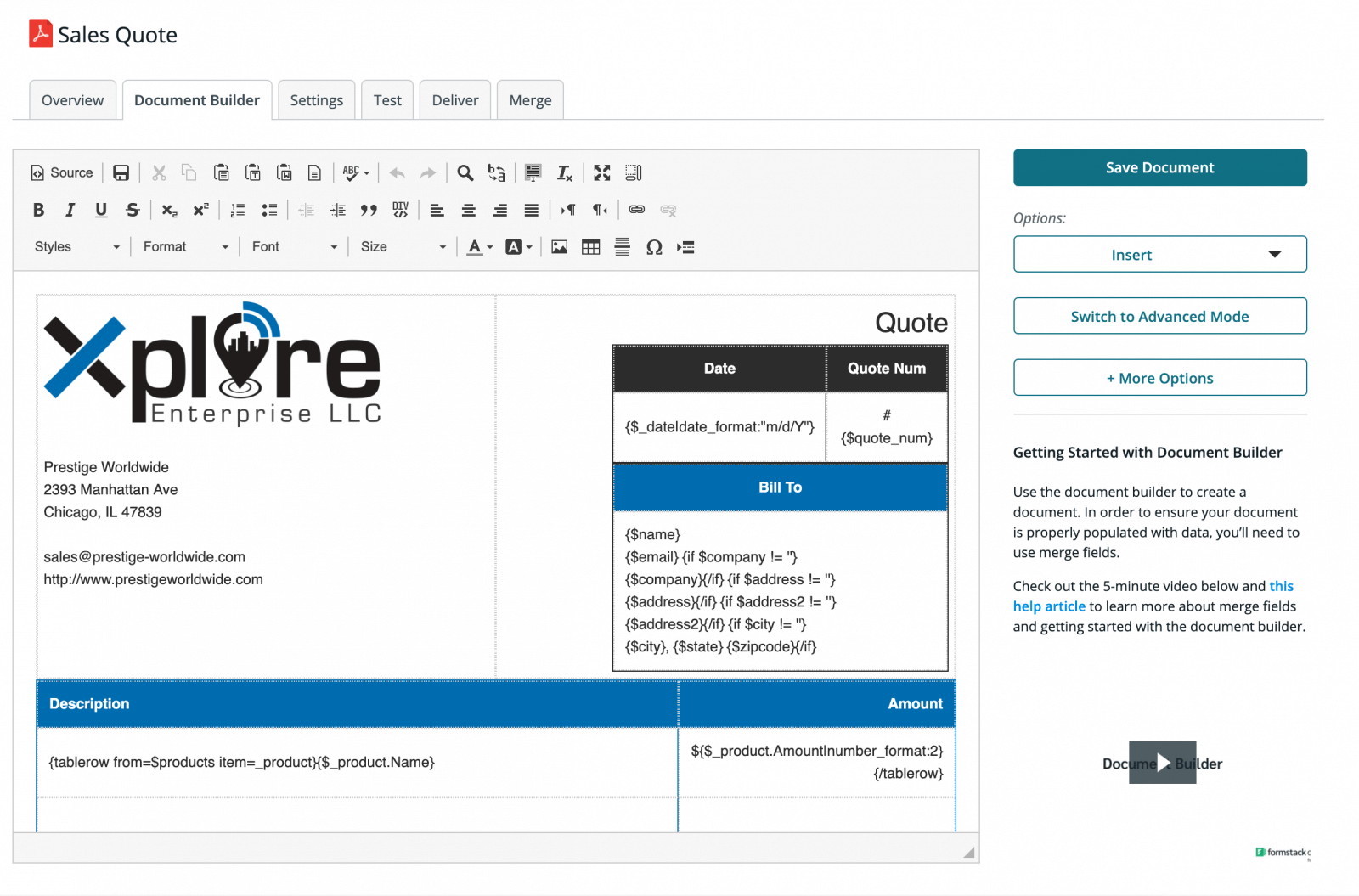
These are used by sales representatives to formalize the offering to prospects. These templates ensure that proposals and quotes are professionally presented and consistently formatted, which helps streamline the approval process.
Contract Templates
These are ready-made templates for various agreements required in the sales process. Standardized contracts cover all necessary legal provisions, speeding up the negotiation phase and reducing legal overheads.
Performance Tracking Documents
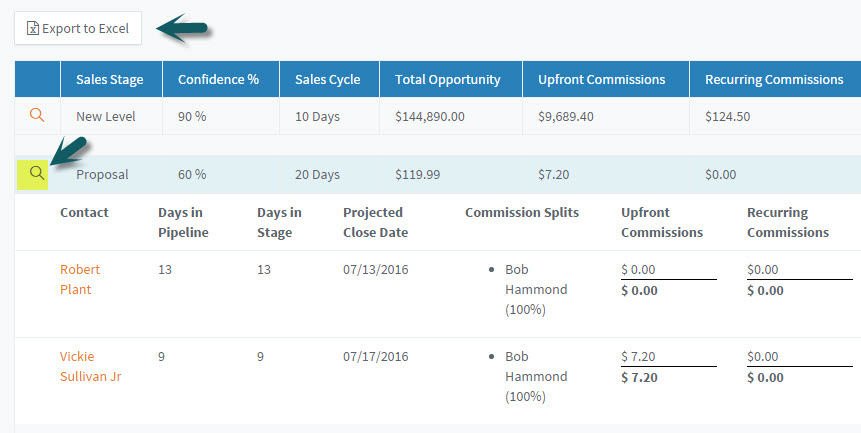
These include sales dashboards, performance metrics, and other reporting tools that help sales managers monitor the sales team’s effectiveness, track progress toward goals, and identify areas for improvement.
What Are the Benefits of Creating Sales Documentation?
Creating detailed sales documentation offers multiple benefits that enhance the effectiveness and efficiency of sales teams.
Sales documentation enables the following benefits:
Improved Consistency in Sales Messages
By maintaining a uniform set of documents that all sales team members utilize, companies ensure that their sales pitches, proposals, and product explanations remain consistent across all interactions.
This prevents miscommunications and ensures that all customers receive the same information, which is crucial for building brand trust and credibility.
Enhanced Sales Efficiency
Sales documentation like playbooks and FAQs lets sales representatives quickly find the information necessary to move sales forward without delays.
This accessibility minimizes the time spent searching for information and allows sales teams to respond to customer inquiries more swiftly and accurately, speeding up the sales cycle.
Better Sales Training & Onboarding
Well-structured sales documentation is essential in training new team members. It provides them with all the necessary information about the sales process, best practices, product details, and customer handling techniques.
This helps shorten the learning curve for new hires and brings them up to speed quickly, allowing them to contribute to the team’s goals sooner.
Related blog: 9 Golden Tips for Successful Remote Employee Onboarding
Optimized Deal Closing Rates
Sales documentation like case studies, competitor battle cards, and detailed product demos can empower sales reps during negotiations by providing concrete data and proven outcomes to support their pitches.
This information is crucial in convincing prospects of the value of a product or service, increasing the likelihood of closing deals.
Quality Control & Compliance
Sales documentation like contracts and proposal templates ensure that all transactions comply with legal standards and company policies.
They help mitigate risk by ensuring that every contract or proposal is thorough and meets the required guidelines before being presented to a client.
Strategic Alignment Across Departments
Sales documentation that outlines detailed product features and market strategies can be shared across departments, ensuring that marketing, product development, and customer service teams are aligned with the sales strategies.
This cross-departmental alignment ensures that all teams work towards the same goals and deliver a consistent customer experience.
Richer Insights for Continuous Improvement
Sales documentation enables actionable insights into the sales process and customer behaviors. For example, analyzing which sections of a sales playbook are most frequently accessed or which FAQs are most commonly used can indicate areas where further training or additional resources are needed.
This continuous feedback loop helps sales teams continuously enhance their strategies and documentation, leading to better results.
What Are the Steps to Create Sales Documentation?
Creating sales documentation isn’t a piece of cake, but it’s not rocket science, either. It is a strategic process that involves a series of steps tailored to enhance the efficiency and impact of your sales team. Let’s discuss how to create sales documents.
1. Determine Your Purpose & Goals
Have your purpose and goals crystal clear before starting the documentation process. Ask yourself a few questions to come to a definite answer about why you need a sales document:
- Are you worried about your sales team’s productivity and want to do everything you can to improve it?
- Is the declining sales figure your top concern, and are you counting on your sales documents to solve this problem?
- Do you want to support your sales team and empower them to win clients for the long term?
Clarifying your goals and purpose will help your documentation team head in the right direction.
2. Seek Support From Different Teams
Creating sales documentation is a collaborative process. A single person or team cannot achieve the quality that multiple individuals working together can.
The depth and breadth of information demanded by sales documentation can be achieved only when different teams – marketing, support, product, etc., come and work together as a unified family.
For example, the support team can share the challenges customers frequently face. While the marketing team can offer insights into the product’s performance and buyer behavior, the product team can peek into product features, functionality, risk areas, and more.
Your sales team can leverage these insights and translate them into effective actions that drive better sales.
To maintain harmony and collaboration among team members, you can assign them separate roles based on what suits them best. For example, subject matter experts can be assigned the role of contributors, managers can be assigned the administrator’s role, and those at the senior level can be assigned editorial duties.
When each member knows what they are accountable for, there will be minimum confusion and maximum output.
3. Add All Crucial Information Your Sales Team Needs
Now, your team should start creating content on all important topics related to the sales function, such as:
- The sales process
- Onboarding checklist for new hires
- Product demo videos
- Training material
- FAQs
- Sales scripts for both calls and emails
- Customer case studies, and more.
You can also mention the different techniques to steer conversations in a positive direction and convince prospects to buy your product. Additionally, the process of upselling and cross-selling can be added to your sales document.
To make things easier for your sales team, you can segment prospects into broad categories, describe them in detail, and provide strategies for targeting.
Not every customer will trust everything your sales team members say. Some of them will object by asking your reps tough questions.
Your documentation should teach how to handle objections related to pricing, product features, maintenance, and almost anything that customers are doubtful about.
4. Enhance Engagement With Images, Videos & Examples
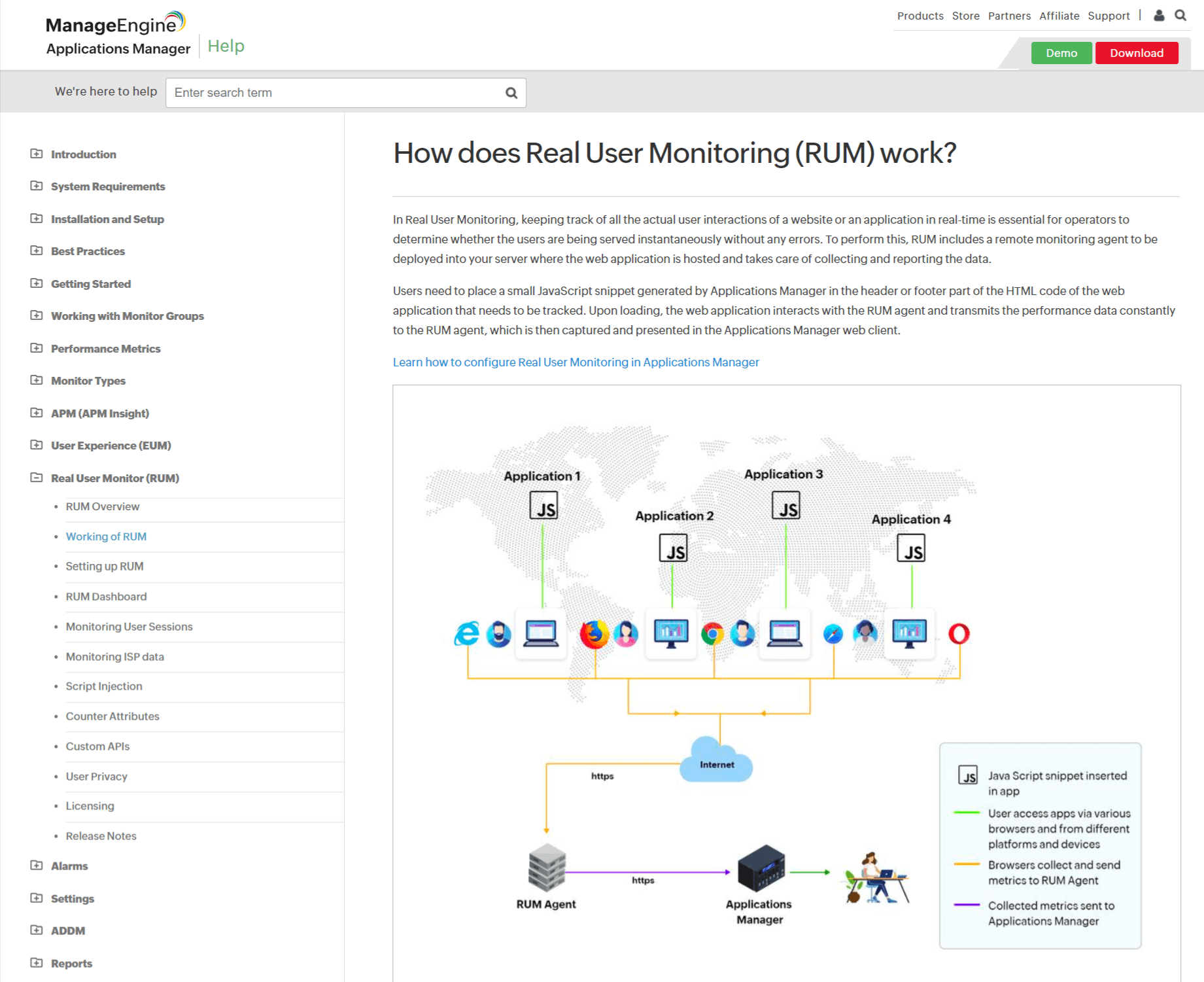
Sales documentation is a one-stop platform that your sales team uses frequently.
During customer interactions, salespersons do not have the time to dig deeper, browse through each article, and spend hours finding a piece of information. That would be counterintuitive, defeating the primary purpose of creating documentation in the first place.
You can use multiple images, videos, and examples at the right spots to help your sales team grasp concepts faster without reading an entire article.
Instead of reading a paragraph about product features, they can immediately watch a video and answer customer questions.
Moreover, adding visuals to your documentation is an excellent way to improve engagement with your content and provide more information in less time.
5. Publish Error-Free Content as a Help Site Across Devices
With one wrong piece of information, you risk losing your hard-earned customers. Now, that can be a lifetime of regret! The sales team must have the exact information at their disposal, which can be done by setting up a review workflow and approval process.
You can publish your knowledge base content as a professional, searchable help site to make it easily accessible to users across all devices. This will help you provide instant, self-service support to customers and reduce the volume of support tickets.
You can set up permissions to restrict access, allowing only the sales team to view specific content. Monitoring feedback and tracking failed searches facilitate continuous improvement based on user interactions and needs. This ensures that your help site remains up-to-date and highly effective.
6. Keep Updating & Improving Your Sales Documentation
Sales documentation cannot be a static information resource. As your business grows, products develop, services expand, and processes improve, your documentation should also change for the better.
Moreover, your sales team’s requirements will change over time. If they read a particular article the most two years ago, this year, depending on their conversations with your customers, they might look for information on other topics.
A built-in reporting system is a critical feature most document collaboration tools offer today. Using reports, you can unlock thoughtful insights into:
- What questions do your sales team members search for but do not find the answers to
- The search keywords that fail to deliver the correct answers
- The articles rated poorly by your sales team
- Inactive or broken links, and much more.
These insights help you monitor how helpful the sales documentation is for your sales team and whether it brings value to their work.
For example, suppose your sales team frequently searches for answers to questions such as how to handle frustrated customers, what to do when a customer is unwilling to accept the information provided, etc. But your documentation fails to deliver the right answers to these questions.
This shows that “dealing with angry customers” is a common challenge for your sales team members that your documentation does not address.
What can you do in this case? You can use this valuable information to make informed decisions and improve your sales documentation.
What Are the Best Practices for Writing Sales Documentation?
The above section mentions the straightforward steps to create a sales document. But there is so much more you can do to improve the performance of your documentation.
Here are some best practices that you can incorporate into the process to achieve top-notch results:
Craft Engaging Content
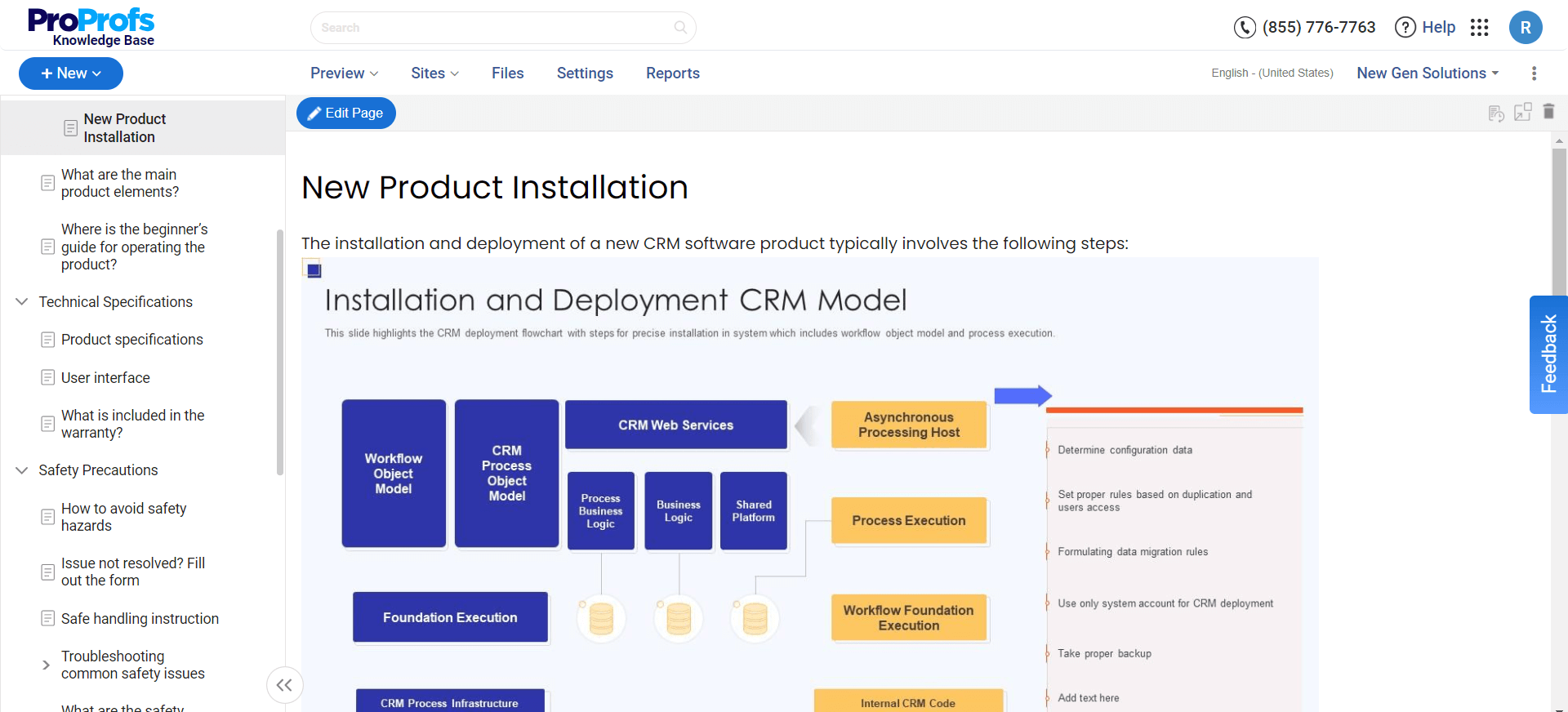
Content forms the heart of a sales document. For your sales team to do their jobs confidently, the sales documentation should equip them with the most updated and flawless information.
For example, if there is a change in your sales process or you want your sales team to upsell or cross-sell a few products, mention it clearly in your sales documentation.
Providing meaningful content improves how your sales team interacts with customers and their daily decisions.
Add a Feedback Section at the End of Every Article
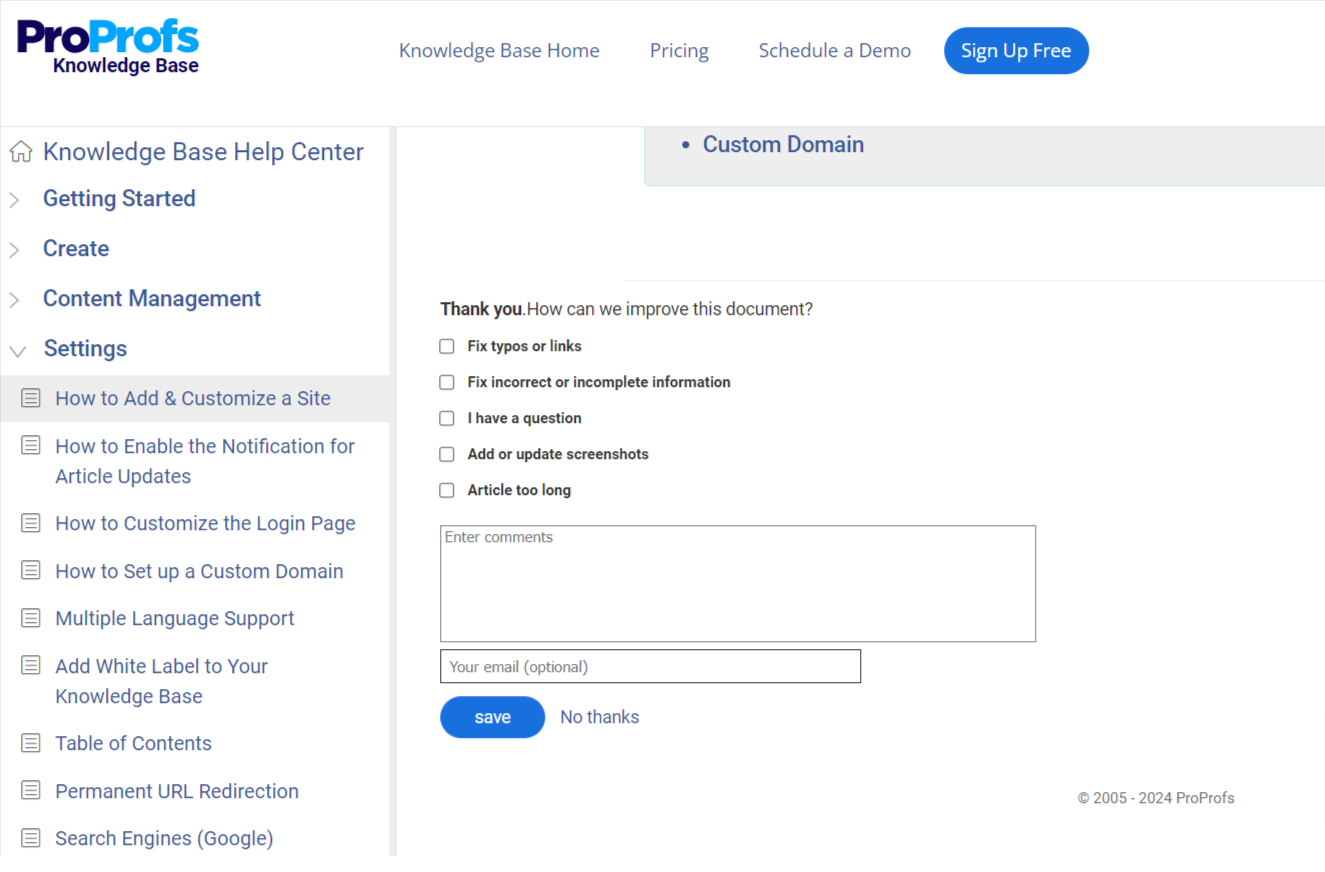
Feedback is essential for improving the quality of your documentation. It also helps the concerned team feel more involved in the document development process.
Your sales staff is the best judge of your sales documentation, and they might have brilliant ideas for improving its design, structure, and content quality. Their suggestions, feedback, and ideas can be game-changing for your documentation.
Capturing feedback in your documentation is super easy. All you need to do is add a feedback form comprising the question – “Did you find this article helpful?”. The answer options can be Yes/No. When someone selects No, a list of possible reasons will appear along with a comment box.
Make Your Document Easy to Search
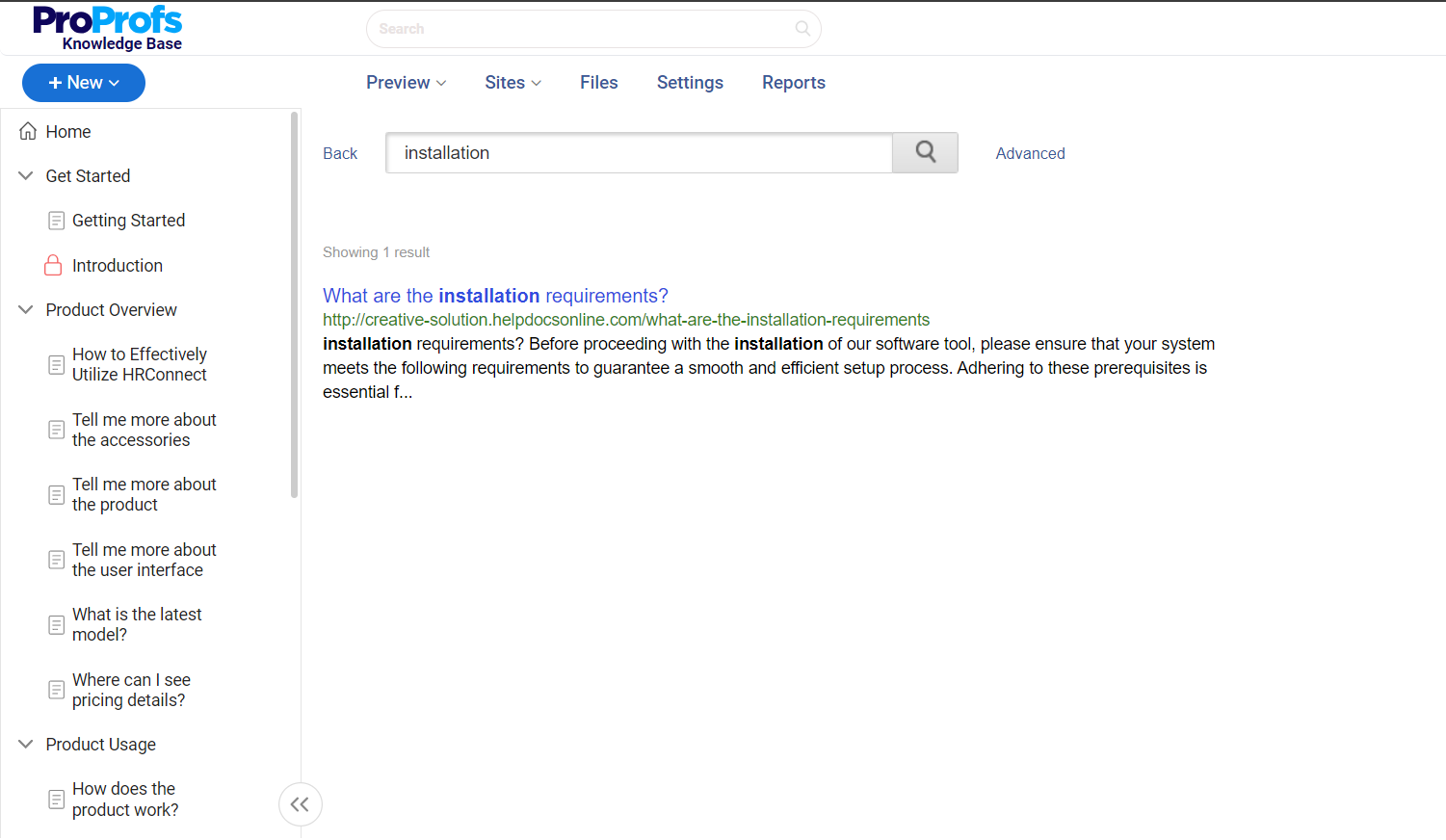
Your sales team needs quick access to information to target prospects with the right messaging at the right time. Salespeople cannot spend hours looking for something, especially when they are in the middle of a call, email, or social media conversation. Their job requires them to have the most updated information to sell better and faster.
That’s where searchability plays its part. Your sales documentation should have a powerful search system and a visible search bar that delivers the correct responses to the questions asked.
Ensure your content has the right keywords and tags so your search system can display relevant results. The search system automatically displays matching pages and articles whenever someone searches for those keywords or questions containing similar tags.
Provide Easy Accessibility on Mobile Phones
A mobile-friendly sales process documentation can enhance the productivity of your sales team.
Salespeople can refer to your documentation anytime they need it, regardless of their time and place of work. This means they will never miss an opportunity to contact prospects and make sales.
Here are a few hacks to make your documentation work well on mobile devices:
- Avoid using tables in the content, as every mobile device does not support them
- Choose your font type clearly, as not every font displays clearly on mobile phones
- Do not fix the breadth and width of images. Let them shrink and expand automatically according to the screen size.
With the convenience of finding information on their mobile phones, your sales team members can better carry out conversations and close deals on the go.
Examples of Sales Documentation
Effective sales documentation is well-organized, easily accessible, and regularly updated to reflect current product information, sales tactics, and market intelligence.
Let’s look at some such examples.
ProProfs Knowledge Base
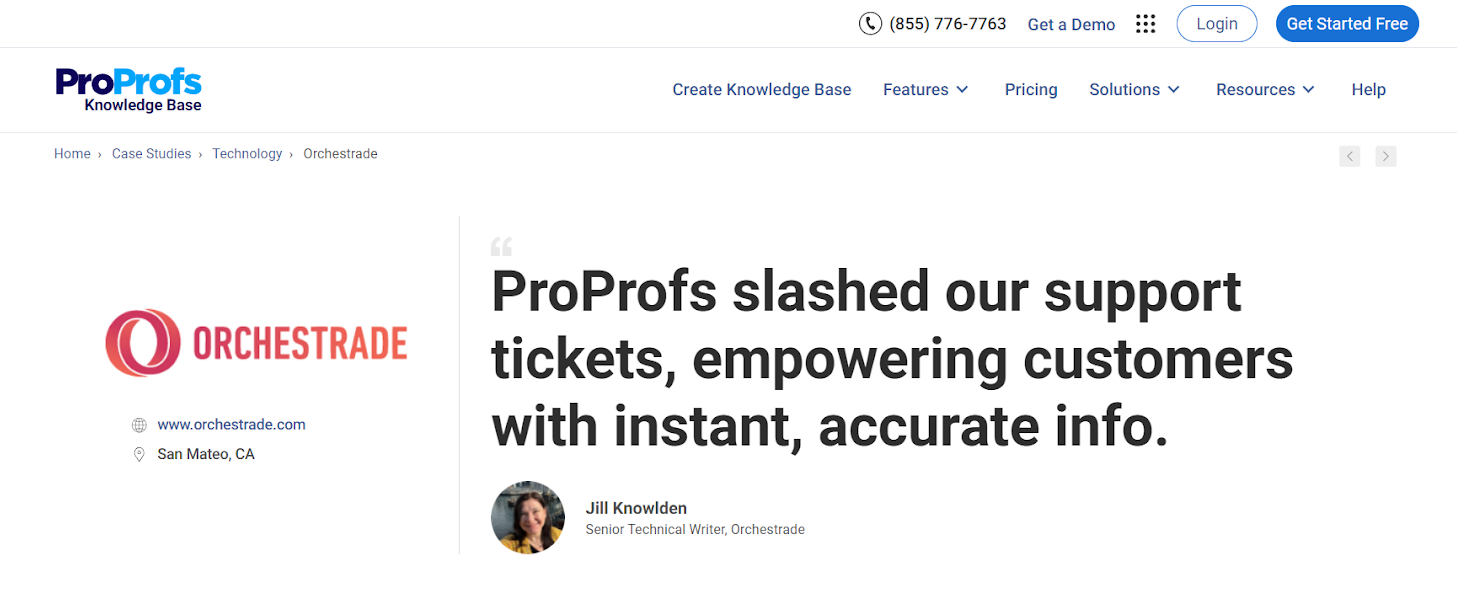
ProProfs Knowledge Base adopts a clear and systematic approach to writing case studies, focusing on demonstrating real-world applications and successes of their solutions.
See the above Orchestrade case study, which outlines the challenges of managing their knowledge base and customer support documentation. It then delves into the solution segment, where they describe how their Knowledge Base software was implemented to address the identified challenges.
Specific features of Orchestrade, like the easy-to-use editor and powerful search functionality, support the narrative and provide readers with a clear understanding of how ProProfs Knowledge Base can be applied effectively.
Balderton
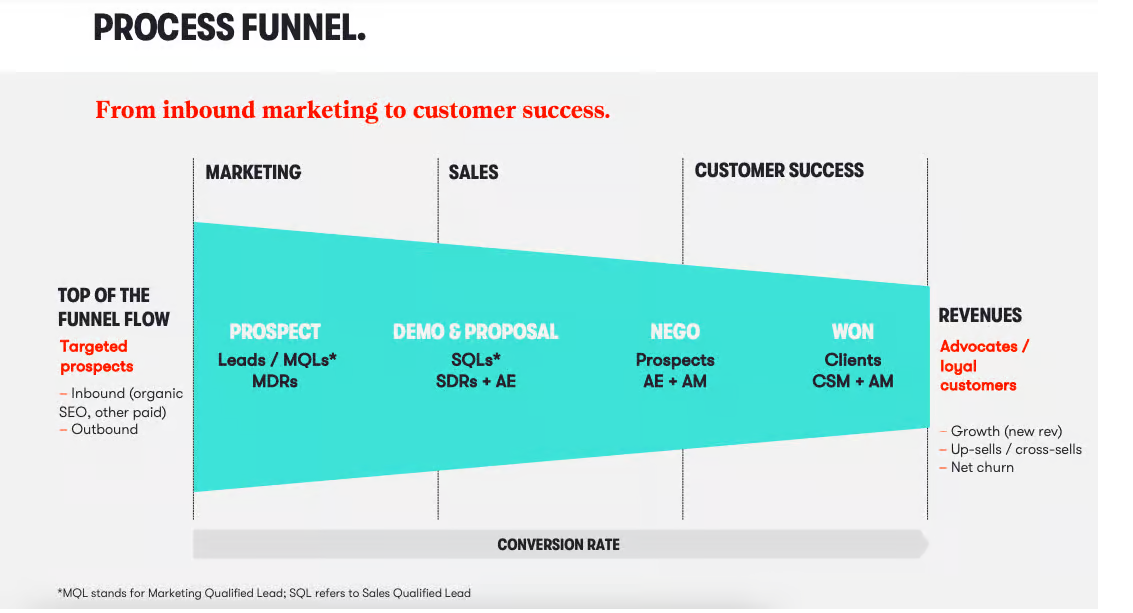
The Balderton playbook is an excellent example of a simple and effective sales playbook. It outlines the sales team’s structure, the sales process (complete with useful visuals), sales compensation, and other critical aspects.
Also, the playbook includes case studies demonstrating how similar strategies have worked for other companies. This is an effective method to motivate sales reps and help them see the potential outcomes of following these processes.
Klue
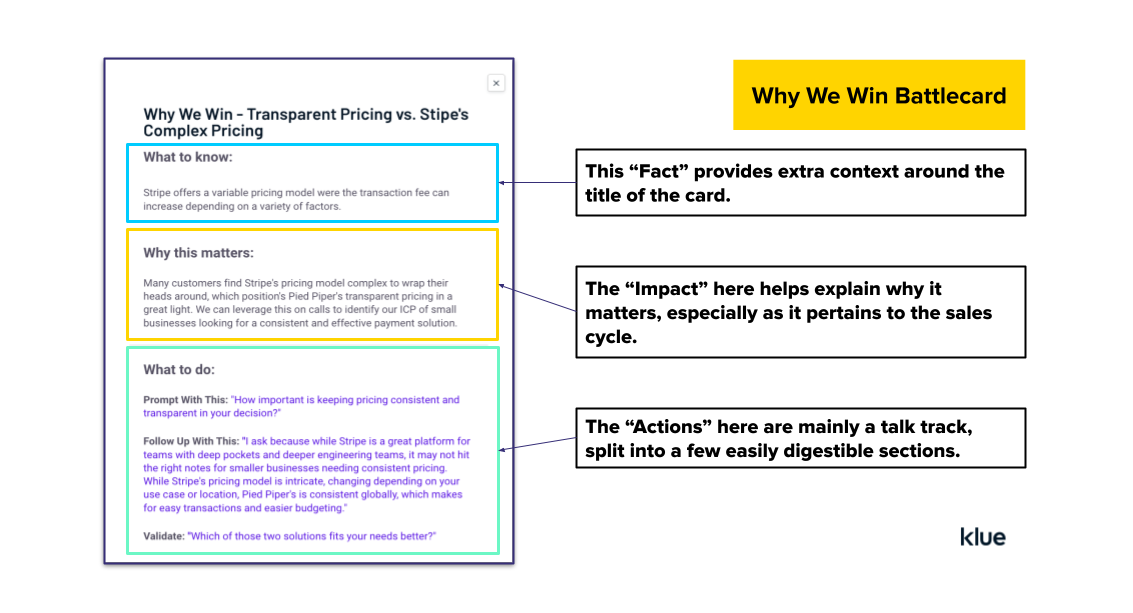
Klue’s sales battlecard employs a sharp and targeted writing style explicitly crafted for sales professionals engaged in competitive scenarios.
The language is concise and action-oriented, aimed at quickly conveying essential tactics and key differentiators. This style supports rapid comprehension and retention of critical points, which is crucial during sales engagements.
The battlecard also includes visually distinct sections and bullet points that make scanning for information fast and efficient, enabling sales reps to find and utilize strategic insights effectively during their sales conversations.
Empower Your Sales Reps & Boost Revenue With Sales Documentation
If there is one thing that every business is worried about, it’s sales. It is the major source of revenue for the smallest of setups and the largest of companies. It’s the heart of a business.
Sales documentation sounds like a simple tool, but it can substantially value your business. Your sales team needs constant support that’s available 24×7. A sales document gives them everything they need – product details, sales scripts, case studies, etc., to woo customers and convince them to buy your product.
Well, ProProfs Knowledge Base can help, with its 100+ pre-approved knowledge base templates, to get you started with content creation quickly. It lets you import Word docs, PDF files, PPTs, and more into your knowledge base.
With its collaboration features like internal comments, user management, access controls, and conditional content, teams can collectively engage in real-time conversations, share insights, and refine their content.
FREE. All Features. FOREVER!
Try our Forever FREE account with all premium features!







